One hundred percent of the grapes for our VDP Gutswein come from our own vineyards. In creating these wines, we place particular emphasis on fruity aromas, lightness and freshness – our estate wines are perfectly made for the moment.
Our objective
All of our wines are lovingly and painstakingly handcrafted. These are all wines of which we are proud and which are just as highly regarded in our region as they are across Germany and on international markets. The high-class quality of our wines is based on the fact that each of us gives his or her best and we take care to keep things running smoothly. This is a magical equilibrium that is necessary in top-grade viticulture to come as close as possible to perfection every year.


Our wines

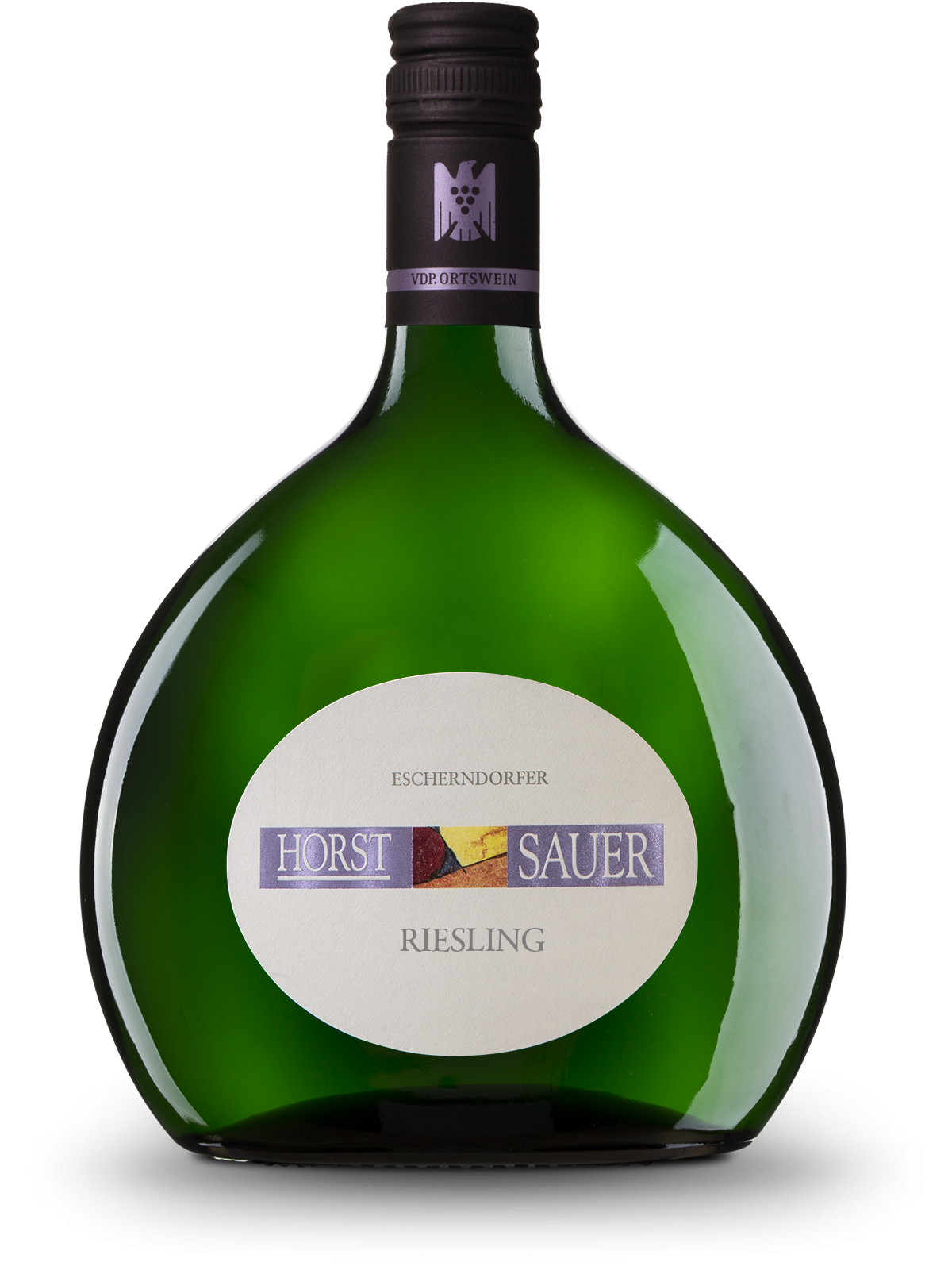
Our local wines (Ortsweine) come from the best Escherndorfer vineyards and their distinctive shell-bearing limestone soils. These wines are excellent representatives of their respective grape varieties and are characterised by their balance of strength, elegance and an enticing freshness.
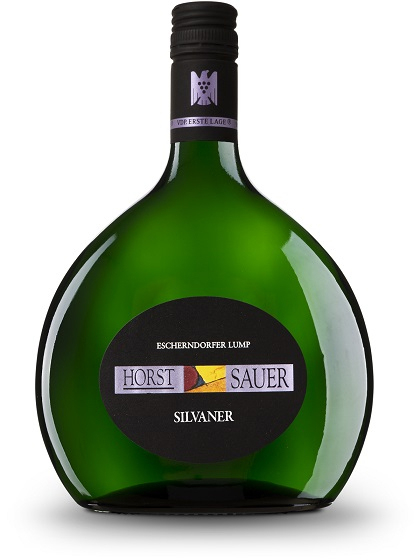
The slope, the individual vineyard site, is the decisive quality feature in this category of our quality pyramid. Two of the terroirs in Escherndorf are classified among the VDP Erste Lage (premier cru) category in Germany. We are proud of this fact, because only single vineyards with particularly strong character and expressive qualities are granted this honour.
Escherndorfer Lump
The steep slope with a gradient of up to seventy-five percent opens up to the south like a parabolic mirror. This exposure ensures that energy is highly concentrated during the growing season, promoting the growth of the vines and protecting them from cold north and east winds in winter. The shelly limestone soil on the Escherndorfer Lump produces wines with intense fruit and complex minerality.
Escherndorfer Fürstenberg
The Escherndorfer Fürstenberg encloses the Lump site to the east and west. This equally exceptional steep slope consists of shell-bearing limestone soil interspersed with loess loam and Lower Keuper clay. This is where exceptionally concentrated, dynamic wines that combine all the characteristics provided by their first-class origins are produced.
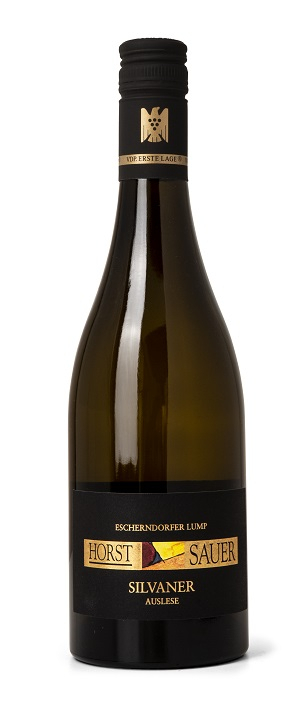
Auslese, Beerenauslese, Trockenbeerenauslese and Eiswein – these are the classic nomenclatures of quality wines with a high sugar content. When nature and the year's climate produce perfect conditions to take the fascinating interplay between fruit, sweetness and acidity to the absolute extreme, we grasp the opportunity and select highly ripe, raisin-like berries right up to the top of the dessert wine range. In this way, we are able to create a condensed expression of nature with a fascinating spectrum of aromas and an almost endless time horizon in elaborate manual work and countless harvest phases.
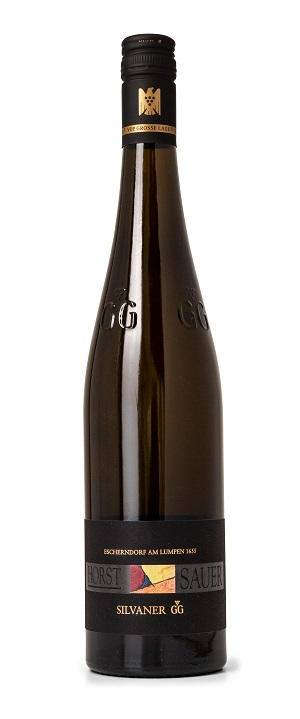
Our best site, where our peak vines are produced, is called “Am Lumpen 1655”. This excellent vineyard with its shell-bearing limestone soils was recognised as outstanding very early on; it was mentioned in an estate and statute description as early as 1655. Our grapes grow in the heart of the Escherndorfer Lump, on selected steep plots of this perfectly south-facing steep slope. We harvest our grand cru grapes from Silvaner and Riesling vines that are now nearly 40 years old. These unique wines represent the quintessence of wine culture from the Franconian shell-bearing limestone.




Vineyards
- Our great location: Escherndorf am Lumpen 1655
The carefully selected steepest parts of the Escherndorfer Lump - a vineyard with a slope that is as steep as a ski jump. A directly south-facing precipitous slope with vines that are over 30 years old. "Am Lumpen" was mentioned for the first time in 1655 in a description of property and by-laws - and it is now our outstanding Grosse Lage.
- Our first location: Escherndorfer Lump
Escherndorfer Lump - This supreme site has been characterized by its very special microclimate for more than a thousand years. The steep slope opens to the South like a parabolic reflector, collecting every sunbeam all year long and protecting the vines from the cold Northern and Eastern winds of winter. The combination of slope angle, insolation and soil of the top shell limestone is unique. This terroir creates wines of a distinctive, concentrated fruitiness and great longevity.
- Unsere Erste Lage: Escherndorfer Fürstenberg
The Escherndorfer Fürstenberg surrounds the Lump both to the east and the west. The slope faces east and so the vineyard is in shadow earlier in the evening, resulting in the formation of greenisch notes and wines with a slender, filigree body.
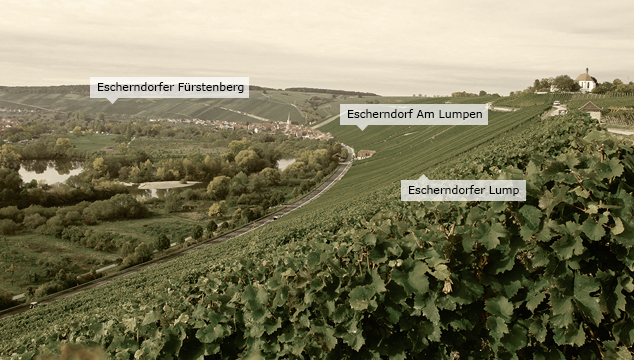
The VDP classification

VDP.Große Lage®The ”Grosse Lage“ classification distinguishes the very best German vineyards. These sites are defined in the most precise terms. This is where the best wines which truly express the character of the site ripen and gain a particular ageing potential. Dry wines from a ”Grosse Lage“ are labelled as ”GG“ dry. These wines need time to mature. The ”Grosses Gewächs“ status denotes the best wines in our cellar – great wines for great moments
Wine:
Escherndorf Am Lumpen 1655
Silvaner GG, Riesling GG

Auslese, Beerenauslese, Trockenbeerenauslese and Eiswein – this is the hierarchy (in ascending order) of the concentrated sweet wines with exotic crystal clear notes. These wines are very dense and culminate in a gentle, harmonious sensation of acidity. nothing fades here; all the components of the flavour blend into a whole.
Wine:
Escherndorfer Lump
Silvaner Auslese, Beerenauslese, Trockenbeerenauslese, Eiswein
Riesling Auslese, Beerenauslese, Trockenbeerenauslese, Eiswein


Our lifeblood is to be found in these wines! Powerful, complex wines with a compact range of aromas from luscious yellow berries. The VDP classification only first class sites with their own unique character where optimal growing conditions prevail and which can be shown to have produced wines with a consistently high quality over a long period receive the accolade ”Erste Lage“.
Wine:
Escherndorfer Lump
Silvaner trocken, Riesling trocken, Scheurebe Spätlese
Escherndorfer Fürstenberg
Müller-Thurgau trocken, Blauer Silvaner trocken, Weißer Burgunder trocken, Spätburgunder trocken

The grapes for our ortsweine also grow in the best Escherndorf vineyards. They are produced from the grape varieties Silvaner, Riesling, Müller-Thurgau, Bacchus and Domina. These wines are fruity and aromatic and have a delicate balance on the palate.
Wine:
Escherndorfer
Silvaner trocken, Riesling trocken, Müller-Thurgau trocken, Bacchus Spätlese, Domina trocken


Gutsweine are ”good from the ground up“ and form the basis of the Prädikat Wine Estates' quality hierarchy which is moulded around terroir. The wines originate from the estate's own holdings and meet the stringent standards prescribed by the VDP. Wines with very fruity aromas, lightness and life - wines which lend themselves to easy drinking.
Wine:
JUST weiß trocken
JUST hellrot trocken
JUST rot trocken
JUST Silvaner trocken
Our ”Sehnsucht“ (Yearning) guides us in our search for the perfect wine. it is a wine of extreme complexity and balance. A wine for special moments and for long cellaring. This wine is placed among the ”Specials“ in our range.
SEHNSUCHT Silvaner trocken




The vintages
The passage of time
Nach einem zu warmen und trüben Winter kam ein kühler und regnerischer Frühling. Die nasse Witterung sorgte für gut durchfeuchtete Böden. Die weiterhin kühlen Temperaturen verzögerten den Austrieb der Reben und verlangsamten ihn Mitte/Ende April. Danach wurde es endlich langsam warm und trocken. Die Blüte Mitte Juni verlief zügig und war in wenigen Tagen abgeschlossen. Das leidige Thema, zu wenig Niederschlag holte uns auch im Sommer 2023 wieder ein. Weder im Mai noch im Juni oder Juli regnete es bei uns, und so holten wir die Wasserfässer wieder heraus und fingen an unsere Weinreben zu betropfen. Vor allem die lange Hitzeperiode im Juli, mit Temperaturen um die 40°C setzte unseren Reben und den arbeitenden Menschen im Weinberg zu. Tag – und Nachttemperaturen von bis zu 27° Grad forderten den Organismus heraus. Die fast durchgehende windige Witterung erschwerten die Pflanzenschutzmaßnahmen und brachte leider in einigen Bereichen Pilzbefall in unsere Weinberge. Ab Ende Juli fiel dann endlich Regen. Die gute Wasserversorgung und hohen Temperaturen sorgten für eine rasche Reifeentwicklung im August und am 10. September starteten wir mit der Weinlese 2023. Das auch diese Weinlese zügig durchgeführt werden musste, lag an der Herausforderung der Fäulnis und des Oidiumbefalls der Weinberge. Nur durch akribische Selektion der gesunden Trauben im Weinberg konnten wir eine durchgehend hohe Qualität ernten. Der letzte Lesetag der Hauptlese war der 6. Oktober. Qualität und Quantität des Jahrganges 2023 sind sehr zufriedenstellend. Die Jungweine präsentieren sich mit einer feinen Mineralik, typischer Rebsorten Aromatik und einer feinen eingebunden Säure. Wir können uns auf Weine mit einem moderaten Alkohol und guter Aromenausprägung freuen. Auch der Jahrgang 2023 trägt das Logo von „FAIR´N GREEN“ auf den Etiketten. Wir haben uns zertifizieren lassen um stetig an unserer Nachhaltigkeit im Weinberg, im Keller, sowie in der Vermarktung zu arbeiten und diese zu verbessern. Natürliche Ressourcen zu erhalten und die Umwelt zu schützen ist unser Bestreben. Wir freuen uns darauf, mit viel Engagement und Tatkraft unser Weingut für die nachfolgenden Generationen nachhaltig zu verbessern und unserer Verantwortung für Mensch, Natur und Klima nachzukommen. „WAS WIR HEUTE TUN, ENTSCHEIDET DARÜBER, WIE DIE WELT MORGEN AUSSIEHT.“ (Marie von Ebner-Eschenbach)
After a mild winter and after the ground had soaked up a good supply of water, the growing season started and was not hampered by frost. Or, to be more precise, it didn't start. We waited and waited for the vines to bud, but this did not happen until mid-April, as the nights in March and April were simply too cold. On the other hand, rainfall in April was ample to replenish the ground water supply. Then, at the beginning of May, the first high temperatures arrived, accompanied by thunderstorms, and it looked as though the plants had just been waiting for the moment to shoot ahead, as it were. Fortunately this activity slowed down when the colder nights came in at the end of May. Flowering started at the beginning of June and developed quickly and positively due to the warm, stable temperatures. The first hot spell of 2022 then arrived, and the hottest day up to that moment, in Kitzingen, was 37.4 °C. It had not rained since mid-May, and this was very evident simply by looking at the soil at the end of June. At the beginning of July, the vines were starting to suffer and, as in 2018 and 2019, we had to water them. July was also warm and dry with temperatures between 25 °C and 35 °C, and the warm, dry weather continued in August. With temperatures up around 35 °C coupled with extremely powerful sunshine, it all became too much for some of our grapes. Like us humans, they sometimes tended to get sunburn and dry out. On 6 September, we started our second-earliest harvest ever with the red wine varieties and, after that, we moved on to the Silvaner grapes in the Lump vineyard. Since the Silvaner grapes coped best with the weather conditions that year, we harvested all our Silvaner grapes first. And then, from the middle of September on, the rain came, producing 90 mm of precipitation, and bringing cooler temperatures. We had to keep taking breaks during the harvest, but it was still one of the fastest harvesting periods ever. Only 24 days later, the main harvest had been stored in the cellar, which was two days less than in 2019. However, the quality and quantity of the vintage compensated us for an exhausting, intensive year of work in the vineyards. The alcohol levels are slightly above those of the 2021 vintage. The slow fermentation process, which was caused by the lower level of nutrients stored in the grapes and available to the yeast, due to the warm and sometimes hot temperatures, promises aromas that are typical for these grapes and well-structured wines.
The year 2021 started with snow, much to the delight of the children. The freezing temperatures accompanied us throughout January and February, but fortunately, the temperatures of minus 15 °C did not harm our vines. March also started relatively cool, but without any significant precipitation. Unfortunately, our hopes of replenishing the water levels in the ground with much-needed rain were not fulfilled. The relatively cool temperatures persisted into April, partly with frosty nights, which, however, did not cause any damage as the buds of the vines had not yet sprouted. With bud break not occurring until mid-May, the year up to this point was very different from the last three years. The weather remained cool and damp into June, but was still not wet enough to replenish the water stores in the soil. The vines began flowering only a few days later than the long-term average and this was concluded after seven days. After that, the weather was changeable and humid again, which offered ideal conditions for such fungal diseases as oidium and peronospora, which spread rapidly and which we had to combat with a large amount of leaf thinning and plant protection measures. With temperatures below 25 °C, we really did not feel we were in the middle of summer. August then brought us a few nice, warm days until it got cooler and wetter again towards the end. The grape harvest started unusually late on 17 September with the pinot noir grapes. Fear of the spotted-wing drosophila vinegar fly, which prefers the red-wine grapes for laying its eggs and against which there is no remedy, prompted us to take this step. The grape harvest was more difficult than ever, we had to interrupt the harvest work again and again because of rain. Since the grapes ripened only very gradually, the harvest dragged on until 31 October. After the 2018, 2019 and 2020 wine years, 2021 was completely different. That year showed us very clearly how much we depend on nature, live with it and, above all, have to work according to its whims. The previous three years were marked by rapid growth, water shortages and high-speed harvests. Now we have experienced again what extremely slow growth and too much rain means and what it means to have to extract every single Oechsle degree from Mother Nature. However difficult the year was in retrospect, we are very satisfied with the quality of the wine in our cellar and look forward to wines with a pleasant acid structure, moderate alcohol and tremendous aroma potential.
Wer hätte zu Beginn des Jahres gedacht, dass es so anders für uns Menschen werden würde?! Für unsere Weinreben hingegen, war es kein besonderes Jahr! Sie wussten gar nicht, dass wir Menschen mit Ausgangsbeschränkungen, Reise- und Einreiseverboten und Kontaktbeschränkungen klarkommen mussten. Nach einem milden Winter, begann das Jahr mit einer relativ normalen Witterung. Die Temperaturen im April stiegen dann auf frühsommerliche Werte und führten zu einem Austrieb der Reben Mitte April. Die Temperaturen blieben weiter um die 25 ° Grad was zu einem schnellen Wachstum der Reben führte. Der wieder einmal wenige Regen machte uns die Entscheidung, Frostrute wegschneiden oder doch noch dran lassen nicht leicht. Zum Glück, hat unser Bauchgefühl sich mal wieder bestätigt und die noch stehenden Frostruten wurden nach der Frostnacht am 12. Mai noch heruntergebunden und sicherte uns eine doch noch zufriedenstellende Ernte 2020. Doch das sollte nicht die einzige Unberechenbarkeit der Natur im Jahr 2020 sein. Wie auch in den letzten Jahren, war der Wassermangel wieder ein zentrales Thema. Und obwohl das Frühjahr und der Sommer gefühlt, nicht so schön und heiß wie die beiden Jahre zuvor gewesen ist, fehlte das Wasser wieder überall. Mit nur 190 mm Niederschlag in den Monaten April - August, litten die Reben wieder unter dem trockenen Frühjahr und Sommer und wir packten im Juli wieder unsere Wassertanks zum Wasser transportieren und unsere Beregnungsrohre aus. Vor allem die hohen Temperaturen von über 30° Grad Celsius Anfang August waren für die Reben eine Herausforderung. Die Weinlese startete genau wie im Jahr zuvor am 12. September mit der Frühsorte Bacchus! Und dann ging es wieder turbomäßig weiter, innerhalb von 3 Wochen hatten wir 90 % unserer Weinberge geerntet und im Keller eingelagert! Dann kam die Feuchtigkeit und wir mussten die Tage an denen wir unsere Trauben ernten konnten nach dem Wetter ausrichten. Wir haben gekämpft dieses Jahr! Mit den Herausforderungen die uns die Natur gestellt hat, haben wir gelernt umzugehen, und konnten mit Erfahrung, Herzblut und Kampfgeist fast jede Herausforderung meistern. Was durch eine Pandemie an zusätzlichen, Aufgabenstellungen und Problemen auf uns Winzer zukam, hat uns allerdings an die Grenzen unserer Leistungsfähigkeit gebracht. Was unsere Mitarbeiter mit uns zusammen in diesem Jahr geleistet haben, war ein enormer Kraftakt, den wir, wie wir glauben, gut gemeistert haben. Was da letztendlich in unserem Weinkeller reift, ist das Ergebnis ein Jahr wie dieses mit allen Herausforderungen zu bewältigen, und am Ende eben nicht am Wein zu merken, wie schwierig das Weinjahr für uns war. Die Jungweine sind von einer schmeichelnden Eleganz geprägt. Die typischen Merkmale der einzelnen Rebsorten konnten wir bis zur Perfektion herausarbeiten. Die Säurestruktur der Weine stimmt auf den Punkt, durch die gute Versorgung der Reben mit Wasser zum notwendigen Zeitpunkt. Wir freuen uns auf Weine, die das Jahr 2020 nicht nur wegen Covid-19 in die Geschichte eingehen lassen, sondern auch wegen unserer Weine die im Jahr 2020 gewachsen sind.
The new year started in the same way as the year 2018 came to an end. The rain deficit of about 130 l / m² was not replenished in January, February and March due to lack of rainfall. The temperatures were consistently too warm compared to the long-term average. April started with normal temperatures, which became more summery by the middle of the month and led to a quick spurt. From late April to mid-May, the temperatures were mixed, unfortunately, the longed for rain did not fall. Nevertheless, the flowering of the vines began about 14 days before the long-term average and was already completed in mid-June. We waited, and waited, but he did not come, the rain .... As in the previous year, we supplied our vines with water from our local well and from the Main. That this was again the right decision this year, showed in the further course of the weather, which brought us no rain until the grape harvest. The August was with warm to very hot temperatures, too dry and the two hot days in mid of August with over 40 degrees burned not only precocious varieties such as Bacchus, but also Rieslings and even some red wines. September began with cool temperatures and very cold nights, which has created a great aroma in the grape. On the 12th of September we started the harvest with warm, luckily not too hot temperatures but still with cool nights, aswell. At the beginning oft he harvest no one thought of completing it after just 22 days later. If we would have written the last two years to have made the fastest harvest in the history of the winery, so 2019 showed that we had to be even faster and could! The question of whether we are traveling too fast, we asked ourselves more than once, the press ran 20 hours a day and the coffee pour in. That it was a good decision linsten to our own feeling was confirmed after exactly our last harvest day the 03.10. the rain finally came ... We are very happy with the musts that are fermenting in our wine cellar! Wines with moderate alcohol and an intense aroma paired with an appealing acidity.
Der Winter wollte einfach nicht gehen. Bis Mitte März waren die Temperaturen kalt und sorgten für absoluten Stillstand im Weinberg. Dann wurde es schlagartig warm. Der Frühling fiel aus! Vom Winter direkt in den Sommer! Ab April hatten wir einen explosionsartigen Austrieb und Wachstum der Reben. Eine so wahnsinnig schnelle Vegetation gab es selten. Die Blüte der Reben im Mai war bei dem trockenen und warmen Wetter schnell vorbei und die Trauben genossen die Idealen Wetterbedingungen und legten eine rekordreife Entwicklung an den Tag. Schon Mitte Juli war das Stadium Reifebeginn erreicht. Die anhaltende Trockenheit und die weiteren Aussichten auf: weiterhin kein Regen, veranlasste uns dazu unsere Weinberge zu bewässern. In unsere mit Tröpfchenbewässerung ausgestatteten Weinberge fuhren wir ca. 400.000 Liter Wasser. Die restlichen Weinberge ohne stationäre Bewässerung versorgten wir mit Wasser aus dem Main per Ueberkronenbewässerung. Auch im August blieb das Wetter warm und trocken und zeigte an, dass wir uns auf die früheste Lese aller Zeiten vorbereiten sollten. Am 31. August ging es dann auch tatsächlich los. Nicht wie gewohnt mit den Frühsorten Müller-Thurgau und Bacchus sondern mit Silvaner und Riesling. 14 Tage früher als 2017! Trotz der anhaltenden Trockenheit haben unsere Weinreben eine sehr gute Qualität erbracht. Goldgelbe Trauben, die wie gemalt aussahen hingen an den Weinreben und ließen uns die Wahl des Erntezeitpunktes. Die einzige Herausforderung war die anhaltende Hitze bei der Lese . 5 Wochen später waren schon fast alle unsere Trauben gelesen und im Keller eingelagert. Sehr intensive Fruchtaromen und eine angenehme Säurestruktur versprechen einen großartigen Jahrgang 2018.
The Year 2017 began with a cold January and too little moisture for the grapes. In February and March then warm temperatures, the mild weather led to an early vine development, which was braked again in April by cool and wet weather. We were fortunately spared from the frosts that went through Franconia in April. The blissful month May was with warm temperatures, after the rains in April, ideal for a rapid growth of the vines. Warm but always rainy were the months of June, July and August. Also the September waited with a lot of rain and so began the harvest much earlier than in the years ago. The first Bacchus grapes were already harvested on September 13th, and one of the craziest grape-harvest we had ever seen in our winery began. The grape ripeness of the various vineyard sites and locations could not be more different. Only by constantly observing our grapes was it possible to determine the perfect harvest time for each individual vineyard. The fact that the location of Escherndorfer Lump is an outstanding location has clearly shown itself this year. When our Müller-Thurgau grapes, which were usually first harvest, had still too little 75 ° Oechsle, the Silvaner were already ripe in the lump and could be read by us with 96 ° Oechsle ... A crazy year in which the nature showed us once more, that we can only harvest what the nature gives us. 24 intensive days later the main harvest was finished. It was the fastest harvest in our winery at all. The damp weather followed us throughout the days, to harvest our grapes before the coming decay, we had to act quickly. The fermenting wines in the cellar show a beautiful and clear fruit aromatic, we expect elegant, fine-grained wines with a good structure which is supported by the acid!
The year 2015 ended with mild temperatures and the year 2016 began also. A mild winter and an average spring. This caused moderate growth in the vines. The water budget deficit of last year was replenished with the rainfall at the beginning of the year. At the end of April we were worried about the frost for our vines. Luckily the majority of our vineyards were spared, only about 5% of our vines were affected by frost. In the months of May and June it rained, and it rained and rained. The warm and constantly wet weather increased the pressure of fungal diseases in the vineyards. The blossom drew into the length and caused occasional seductions. Also the July was rainy. We had to cope with this period by means of a high workload and targeted plant protection measures in the vineyards. Thanks to the commitment of the team in the vineyard, we were able to continue to work satisfactorily with healthy grapes. Until to the end of the summer we become a constant warm weather returned. The hot September with temperatures of up to 38 ° C conjured us a smile in the face. The harvest began on September 16, to determine the right time to harvest the grapes was the challenge of this vintage. In many plants, 2 harvest rounds were necessary to reach the optimal ripeness point of the grapes. Fortunately, Petrus had once again rejoiced us and gave us a dry autumn. The main harvest was finished at the end of October and the hope to getting a ice wine this year. We would not have thought that our hopes would be fulfilled to this extent. We had many grapes on the vines, for the icewine-harvest outside. The wine of the year 2016, gave us ice wines from the grapes varitiey Müller-Thurgau, Silvaner and Riesling. The wines of the vintage shows us filigree and elegant mosts. The alcohol contents are approx. 0.5-1 vol. % Lower than in previous years. The wines are well structured and are characterized by a pronounced fruit aromatics.
The year of the sun. January started with snow and cold temperatures, which did not last long. February and March were an average of the last few years, as regards temperatures and rainfall. The shoot of the vines was medium early - about 1 week before the long-term cut. As early as May, the soil was no longer supplied with sufficient water because of the lack of rainfall. Nevertheless, the development of the vines progressed rapidly. The temperatures during the day were not too hot and the mild nights ensured an optimal vine growth without stress. That changed then in July, not only for the vines, but also for us. The persistent drought and the lack of rain allowed us to irrigate our vineyards. In the plants equipped with droplet irrigation, about 1 million liters of water were driven. All the other vineyards we sprinkled with our irrigation systems and water from the Main. We decided to make the right decision here, at the latest when the rain did not happen in August and the German heat cord was measured at 40.7 ° C not far from us in Kitzingen. It all looked like a year like 2003. We were amazed when we had the first juices in the cellar and the acid values ??were not as low as feared, despite the maturity of the grapes. Especially the Rieslings still had an acid of 10 g / l despite 100 ° Oechsle. The reading was thus simple. We harvested healthy and ripe grapes, and also the quantity was not lower than in recent years thanks to the adequate water supply of the grapes.
Durch die frühe Vegetation und dem schönen trockenen Frühling, stieg auch gleichzeitig die Angst vor den Eisheiligen. Diese blieben aber für uns, glücklicherweise, ohne Folgen. Wenige bis keine Frostschäden wurden in unseren Weinbergen verzeichnet. Der weitere Verlauf gleicht dem Jahrgang 2003. Durch ungewöhnlich warme Temperaturen - dem subtropisch naheliegenden Klima - mussten wir uns mehr um die Bodenbewirtschaftung kümmern. Durch das Umbrechen der Begrünung und das Ausbringen von Mulch, wurde der Boden mit den wenigen Regenfällen und den leichten Frühnebeln feucht gehalten. Auf die Entblätterung wurde ein großes Augenmerk gelegt, um Licht und Luft an die Trauben zu lassen und die Reife nicht zu beeinträchtigen. Bis Mitte August, sah alles super aus: Gesunde Trauben und gesunde Rebstöcke. Doch je näher der Herbst kam, umso mehr sorgten wir uns um unsere Trauben, die nach anfänglicher Trockenheit die enormen Wassermengen vom August zu verarbeiten hatten. Aufgrund der Fäulnis, die sich durch die feuchte Witterung sehr schnell ausbreitete, mussten wir unsere Trauben ständig kontrollieren, selektieren und genau überlegte Boden- und Blattarbeit leisten. Ständige Kontrollen im Weinberg und das Ausschneiden der nicht gesunden Trauben, standen an der Tagesordnung. Unsere Überlegungen über den optimalen Lesezeitpunkt glichen einem klassischen Sprint bei der Olympiade. Zu früh gestartet ist man disqualifiziert, zu spät gestartet verliert man. Übertragen auf uns heißt das zu früh geerntet fehlt die Reife, und zu spät geerntet gewinnt die Fäulnis. So haben wir unseren Müller – Thurgau, Riesling, Scheurebe und Silvaner in zwei – drei Lesegängen geerntet, um Vollreife, gesunde Trauben keltern zu können. An eine Lese die von so kurzer Dauer und so arbeitsintensiv war, werden wir noch in Jahren zu erzählen wissen. Wir können uns auf einen Jahrgang freuen, der sich mit einer glasklaren Aromatik und einer herkunftsbezogenen Stilistik präsentiert. Die Weine zeigen einen moderaten Alkohol und eine eingebundene Säure.
A vintage that has asked for us! After an unusually cold winter, a very late sprout and a late bloom, the vines were able to shorten the large residue of about 3 weeks in the long-term mean by the partial sunny and warm summer by one week. In September the constant hoping for warm and dry weather and the anxiety about the health of our grapes began. Nature sets the tone, we clearly felt it in 2013. Although we had prepared our vineyards optimally for the harvest through 3 exfoliation runs at the beginning of August, September and October, prompt action and patience was required at the right time. We have preserved nerve strength and managed to harvest aromatic and healthy grapes. The vintage began in October 2 weeks later than in the last few years. Through several readings we were able to reap all classifications from Gutswein to the Grosse Gewächs. Since the harvest was low, we could only harvest a very small quantity of noble wines. The maturity and thus the alcohol contents are slightly below those of the last years. The cold temperatures especially at night have ensured that the wines already present a fine and elegant aromas.
After the vines sprouted in late April, we were anxious about the “Frost Saints” days in early May, but luckily the temperature did not drop too low. Thanks to the warm, dry spring, the vines grew very fast and blossomed eight to ten days earlier than the last years’ average. As the weather was cool in early June, the blooming period then lasted up to 14 days, resulting in loose-berried grapes. With a number of hot and dry days in summer, the vegetation head start of eight to ten days remained. Frequent light rains in late August and early September finally brought the vines the much-needed water. The grapes owe their ripeness and rich flavours primarily to the gorgeous late summer with its warm days and cool nights which significantly contributed to the excellent grape quality. This autumn was everything a winegrower can dream of: sunny, warm, little rain. The grapes were beautiful as a picture, ripe, yellow-green, and full of flavour. We enjoyed the luxury of being able to wait for the perfect time to harvest the different wine qualities. It was an autumn as in the lovely poem by Rainer Maria Rielke: “Command the fruits to swell on tree and vine; grant them a few more warm transparent days, urge them on to fulfilment then, and press the final sweetness into the heavy wine.“ We are looking forward to elegant, charming wines with a moderate alcohol content that are a pleasure to drink. They surprise us again and again with the complexity of their flavours, and we keep wanting more of them!
Every wine grower is ruled by the same calendar: As the previous year’s vintage is finalized, the new wine year starts. So the year starts already in October. We can look back at the vintage 2011 as an unusual year, stretching over months of ever-changing weather. Winter began in November, which was rich in snow and frost; spring followed, bringing extremely enjoyable mild weather. This climate leads to an unusually early budding of the vines. It felt as though summer had come early. However little did we know, that the night of the 3rd-4th May would bring a night with a bitter -5 degrees. The buds were frozen! This could have been a disaster for the 2011 crop but the advantageous aspect of the steep rocky slopes of Escherndorfer growing area provided protection for the grapes and luckily the bitter temperatures of the 3rd-4th May didn't cause irreparable damage. The rest of May and June was drier than normal. However skies then opened up and the rain that was so longed for finally came. Everyone sighed with relief.......Unbelievably the surprises did not relent. Hail followed the rain but due to the advantageous aspect of the Escherndorf lay the vines were protected. However the wine-growing year of 2011 finished with an Indian summer: beautiful temperatures, making it a hot end to a both exciting year. The pickers appeared in short trousers and with faces awash with smiles, 2 weeks earlier than in the previous years. The question on everyone’s lips: the wines? These could be as unusual as the growing season itself. The weather patterns have provided us with a pronounced gold yellow berry with optimal sugar content and acidity. The wines present themselves with a highly clear and intensive flavor. Their fine flavor and athletic body provide a well-balanced wine. There is a perfect balance of sweet and acid. There is no mistake that 2011 has produced an unbelievable drinking pleasure wine.
After a long, cold winter, the first warm rays of sunshine are balm for the soul. In 2010, we had to wait till April to enjoy them. The rainy, unsettled weather of this spring resulted in untypical flowering behavior in our vines. June and July were very dry, but the vines thrived because of the good moisture content of the soil. This year's August was one of the most rain-laden of recent years… but then it came, the Golden Autumn. Once again it made us the present the German poet Rilke described as: "…gathering the last nectar into the heavy grapes". Harvest started on 21 of September. Because of the small quantity, harvest was short: By the end of October, all grapes were in our cellars. Also in 2010, we were able to harvest all categories from the Qualitätswein over the Großes Gewächs to the Trockenbeerenauslese. All of them have distinct aromas harmoniously paired with some acidity to give the wines liveliness and longevity. There is but one setback: the lower harvest yield.
Luckily, our vines suffered no damage from the severe winter cold with up to minus 15°C in some parts of our vineyards. Spring started with summer-like temperatures, early sprouting, and a good growth of the saplings in April. The chilly, rainy weather in June resulted in slow flowering and a markedly poor fruit set in some parts. Irrespective of the not very summery July weather, the vines grew well and were 7 days in advance of the long-time growth average. With the good water supply and the warm temperatures in July and August, the grapes enjoyed optimum conditions. Harvest started in mid-September at almost summery temperatures and bright sunshine, which lasted till the end of harvest in late October. Picking healthy, golden-yellow grapes, we had one of the most relaxed harvests ever. The 2009 vintage turned out to be one of the three best vintages ever produced by our winery. The wines are crystal-clear and brilliant with delicate aromas. Juiciness and a crisp acidity together with a lean yet powerful body make for delightful wines with a character.
The extreme conditions of the year have demanded a great deal from us. After a relatively warm winter, a very steady and rapid shooting followed in early May, which was accompanied by early-summer temperatures of around 20 °C. Thus, the development of the vines progressed quickly. However, May turned out to be a very dry month so that the florescence had already begun in the beginning of June. High temperatures over month’s end July/August intensified an already tense water situation so that the vineyards needed to be watered. In the end of August, there was ample rainfall with up to 80 l/m2 within a very short period of time. On 15 September, the harvest of the early grape varieties started. There was rainfall again and again during the harvest, so much, so we had to take several breaks. Due to the rain we had to struggle for every degree on the “Oechsle scale” from the vineyard. Patience and perseverance were necessary. “The most difficult grape harvest I have encountered in the last 30 years!” declared Horst Sauer. The wines turned out to be of distinctive aroma with a robust tartness structure. The wines have a lot of flavour and good potential to store well. Thanks to this year’s cold winter we were able to harvest a Riesling and Silvaner ice wine.
A record-breaking spring! Very high temperatures and sunshine every day make the buds grow very fast. A summer of rather mediocre weather follows, but still we are about 3 weeks ahead of our regular schedule. We harvest the first grapes very early, on 12 September. Different states of ripeness of the grapes on one single vine, sometimes deviating by up to 20° Oechsle, demand that we harvest selectively and with great precision. Cool night temperatures enhance the formation of aroma in the grapes and preserve the acidity in the berries. This produces wines with an expressive, subtle fruitiness. Thanks to their low alcohol content, the wines have a delicate filigree character with some crisp acidity. The vintage is considered an ”early start” with a very long breath. The harvest is trying and takes almost 6 weeks.
When we started harvesting in late September, the grapes looked excellent. On 3 October it began to pour. 80 l of rain per square meter changed everything on the vineyards. The rain swelled the berries to bursting point. We had to be really quick to get the grapes in while they were still healthy. In record time, we rushed through harvesting and pressing. We were rewarded for our hard work: the 2006 wines turned out elegant, fine-limbed and with a reticent acidity. The botrytis (noble rot) enabled us to produce excellent sweet wines. The vintage goes down as the shortest and fastest in the history of the wine estate!
In den erste zwei Septemberwochen fällt sehr viel Regen. Die Trauben fangen daraufhin das Faulen an – und nun ist Eile geboten. Die Öchslegrade sind sehr gut deshalb beginnt die Lese schon am 19. September. Durch das Auslesen der faulen Trauben erhalten wir gesunde Trauben mit einer moderaten Säure. Schon in der 2. Oktoberwoche ist die Lese erfolgreich beendet. Es war die schnellste Weinlese in der Geschichte des Weingutes. Die Weine sind etwas weniger von der Säure geprägt als die 2004er aber sehr fruchtig und harmonisch. Sie dürfen gespannt sein!
Nachdem wahnsinnigen Jahrgang 2003 kehrt wieder etwas Normalität in die Weinberge zurück. Der Austrieb der Reben und die Reife der Trauben lagen im langjährigen Mittel. Mitte Oktober beginnt die Lese, durch häufige Regenfälle allerdings mit Unterbrechungen und das warten auf schöneres Wetter. Mitte November haben wir es endlich geschafft!! Der 2004er Jahrgang präsentiert sich herrlich fruchtig und spritzig. Weine die einfach Spaß machen!
Das Sonnenjahr 2003 vergleichbar mit 1947 und 1976. Alles war ideal. Früher Austrieb der Reben. Warmes, trockenes Frühjahr sehr frühe Blüte, dann der heiße trockene super Sommer, in unserem Weingut wurden alle Maßnahmen ergriffen um die Verdunstung des Wassers im Boden hinaus zu ziehen. Ab Mitte Juni wurden dann alle Weinberge beregnet. Dadurch konnten wir optimale Bedingungen für einen großen Jahrgang schaffen. Vom heißen Sommer ging es Mitte September in die Weinlese die ca 3 Wochen füher als im langjährigen durchschnitt. Die Wetterbedingungen während der Weinlese waren optimal 3 Wochen lang kein Regen sondern nur Sonne. Der Gesundheitszustand der Trauben war optimal nur vollreife 100% gesunde Trauben die goldgelb und sehr saftig aussahen. Das Mostgewicht war bei MTh um 92° bei Silvaner um 98° bei Riesling um 100° Öchsle. Es war ein begeisterndes Jahr. Die ersten Verkostungen zeigen glasklare, saftige, fruchtbetonte, dichte charaktervolle Weine mit viel Spiel. Ein Jahrgang den man in seinem Winzerleben vielleicht nur einmal erlebt. Begeisterung pur.


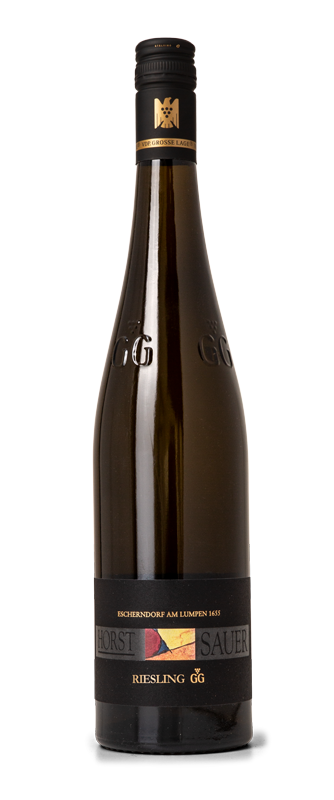
AND THAT AS A FRANCONIAN WINERY!“
